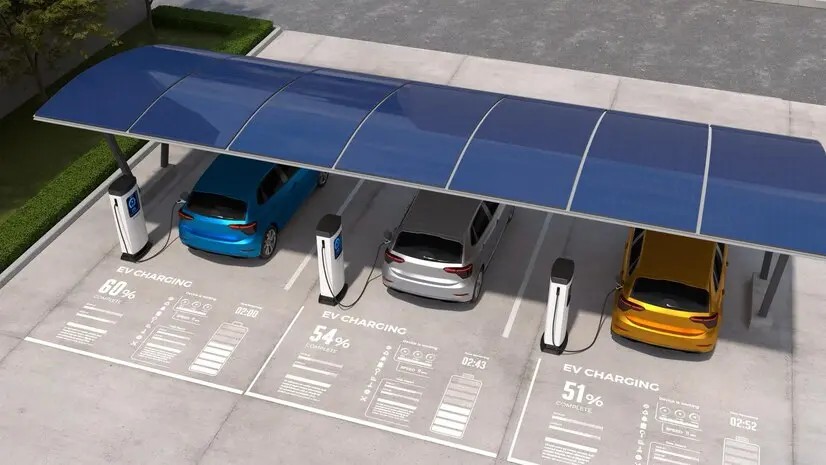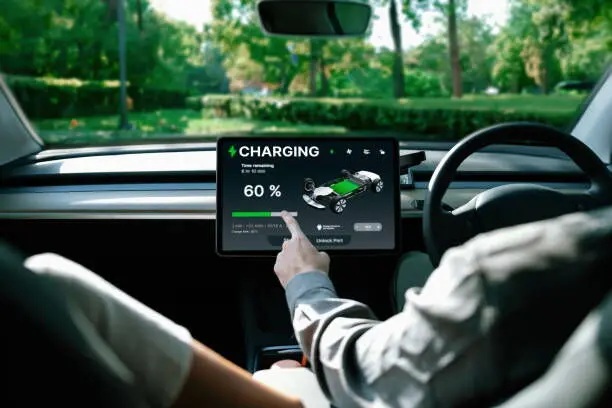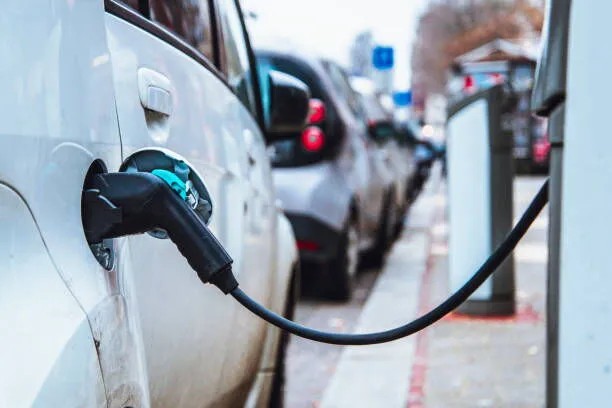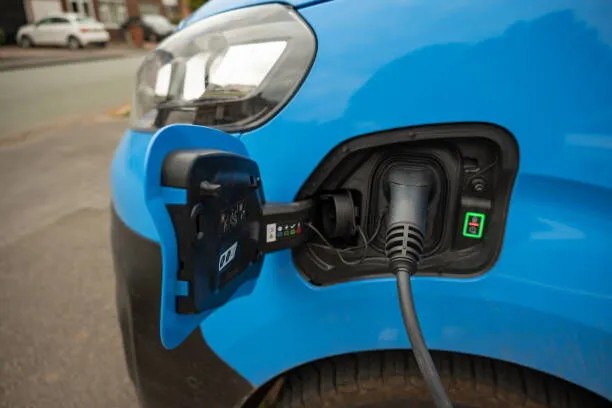Airport EV Charging: Paving the Way for Sustainable Aviation Infrastructure

Strong 8k brings an ultra-HD IPTV experience to your living room and your pocket.
Introduction
As a professional EV charger manufacturer in China, Topper Company delivers reliable electric vehicle charging station equipment and comprehensive solutions.
The aviation industry plays a significant role in global greenhouse gas emissions, contributing nearly 8% of all transportation-related emissions. While fully electric airliners are still a long-term goal, airports can make an immediate impact by embracing electric vehicle (EV) technology. By transitioning their fleet vehicles to EVs, installing EV charging infrastructure, and encouraging third-party contractors to adopt electric vehicles, airports can significantly reduce tailpipe emissions. Additionally, providing EV charging stations for employees, passengers, car rental customers, and the general public can amplify these efforts. This not only supports sustainability but also positions airports as leaders in innovation.
This article explores the growing trend of airport EV charging, examining the types of charging solutions available, key considerations for implementation, and the broader impact on sustainability goals. From standard charging to ultra-fast options, airports are uniquely positioned to support the EV revolution while advancing their environmental objectives.
Airport EV Charging: Key Considerations for Implementation
When planning the installation of EV charging stations at airports, several factors must be carefully considered to ensure optimal placement and functionality. These include:
Demand
Identifying high-traffic areas where EV charging will be most utilized is critical. Locations such as long-term parking lots, employee parking zones, and rental car facilities are prime candidates. By placing charging stations where demand is highest, airports can maximize utilization and meet the needs of a variety of users.
Sustainability Goals
Aligning EV charging infrastructure with broader environmental objectives is essential. By supporting the transition to electric mobility, airports can contribute to global sustainability efforts and demonstrate their commitment to reducing carbon emissions.
Parking Availability
It is important to ensure that there is sufficient parking space in designated lots to accommodate both electric vehicles and traditional gasoline-powered vehicles. This can involve converting a portion of parking areas to EV-specific spaces.
Power and Infrastructure Access
Airports need to assess the availability of electrical infrastructure to support the installation of charging stations. This may involve evaluating the capacity of the existing electrical grid to handle the additional load and making necessary upgrades.
Space for Hardware
Adequate space must be allocated for the installation of charging equipment, including chargers, cables, and other related hardware. The physical layout of the airport should allow for efficient integration without disrupting existing operations.
Operational Efficiency
Charging stations should be strategically placed so they do not obstruct airport operations, such as snow removal or the movement of large vehicles. Efficient placement ensures that the flow of traffic is not hindered and operations continue smoothly.
Accessibility
Providing easy entry and exit points to charging stations is important to minimize congestion, particularly in high-traffic areas. Accessible locations enhance user convenience and encourage widespread adoption of EV charging.
By considering these factors, airports can create a seamless and effective EV charging experience for all users.
Types of EV Charging for Airports
There are several types of EV charging solutions that airports can implement, each catering to different user needs. These include standard charging, fast charging, and ultra-fast charging.
Standard Charging (Level 2 AC)
Standard charging is best suited for situations where vehicles remain parked for extended periods. For example, travelers who leave their EVs in long-term parking can use standard chargers to replenish their batteries over the course of their trip. Standard chargers typically operate at a maximum of 22 kWh, making them a cost-effective and practical option for long-duration parking.
Fast Charging (DC)
Fast charging is ideal for situations where time is limited. It can fully recharge an EV’s battery in 0.5 to 2 hours, making it suitable for short stops. Fast chargers are often installed in high-traffic areas like short-term parking lots, rental car facilities, and passenger drop-off zones.
Ultra-Fast Charging
Ultra-fast charging takes charging to the next level, reducing charging times to as little as 20-30 minutes for an 80% battery charge. This is particularly beneficial for fleet vehicles such as electric taxis and buses, which require quick turnarounds. Installing ultra-fast chargers in strategic locations allows airports to accommodate the growing demand for rapid charging.
Trends in Airport EV Charging
The rise of airport EV charging infrastructure is driven by several key trends, collectively known as the Four Pillars of Airport EV Charging:
EV Fleets
Airports are transitioning their fleet vehicles, such as shuttle buses and baggage carts, to electric models. This reduces emissions and aligns with sustainability goals. Charging stations at fleet parking areas help ensure that these electric vehicles remain operational and efficient.
EV Rental Cars
Rental car companies at airports are increasingly adopting EVs, which creates a demand for charging infrastructure. By installing charging stations in rental car facilities, airports can support the rise of EV rentals and enhance customer satisfaction.
EV Drivers
As more travelers and employees switch to electric vehicles, the demand for EV charging at airports continues to grow. Offering charging stations in both long-term and short-term parking areas allows airports to meet the needs of EV drivers, ensuring that their vehicles are charged and ready upon return.
Overall EV Infrastructure
Airports are investing in comprehensive EV infrastructure, not only to support fleets and rental cars but also to cater to the broader adoption of electric vehicles. This includes installing public charging stations, collaborating with utility providers to improve grid capacity, and incorporating renewable energy sources like solar panels to power the stations sustainably.
The Broader Impact of Airport EV Charging
The implementation of EV charging infrastructure at airports has a broad and lasting impact on sustainability, operational efficiency, and customer satisfaction. By reducing tailpipe emissions, airports contribute to global climate change efforts and help improve air quality in surrounding communities.
Additionally, the availability of charging stations enhances the passenger experience. Eco-conscious travelers are more likely to choose airports that provide EV charging, boosting the airport’s reputation and attracting a growing segment of green-minded consumers.
Airports that embrace EV technology also position themselves as leaders in innovation and sustainability, setting an example for other industries to follow. As the demand for electric vehicles continues to increase, airports that invest in charging infrastructure will be well-positioned to meet the needs of the future.
Conclusion
Airport EV charging is a key component in the aviation industry's journey toward sustainability. By transitioning fleet vehicles to electric models, installing charging stations, and supporting the broader adoption of EVs, airports can reduce their environmental impact while enhancing operational efficiency and customer satisfaction. The availability of diverse charging options, from standard to ultra-fast, ensures that airports can meet the needs of all users, from travelers and employees to fleet operators and rental car companies.
As the world moves toward a greener future, airports have a unique opportunity to lead the way, demonstrating that sustainability and innovation can go hand in hand. Embracing EV charging infrastructure allows airports to reduce their carbon footprint while paving the way for a more sustainable and efficient aviation industry.Know more about Google SEO Directory
Note: IndiBlogHub features both user-submitted and editorial content. We do not verify third-party contributions. Read our Disclaimer and Privacy Policyfor details.







